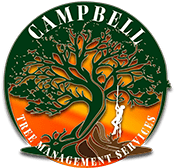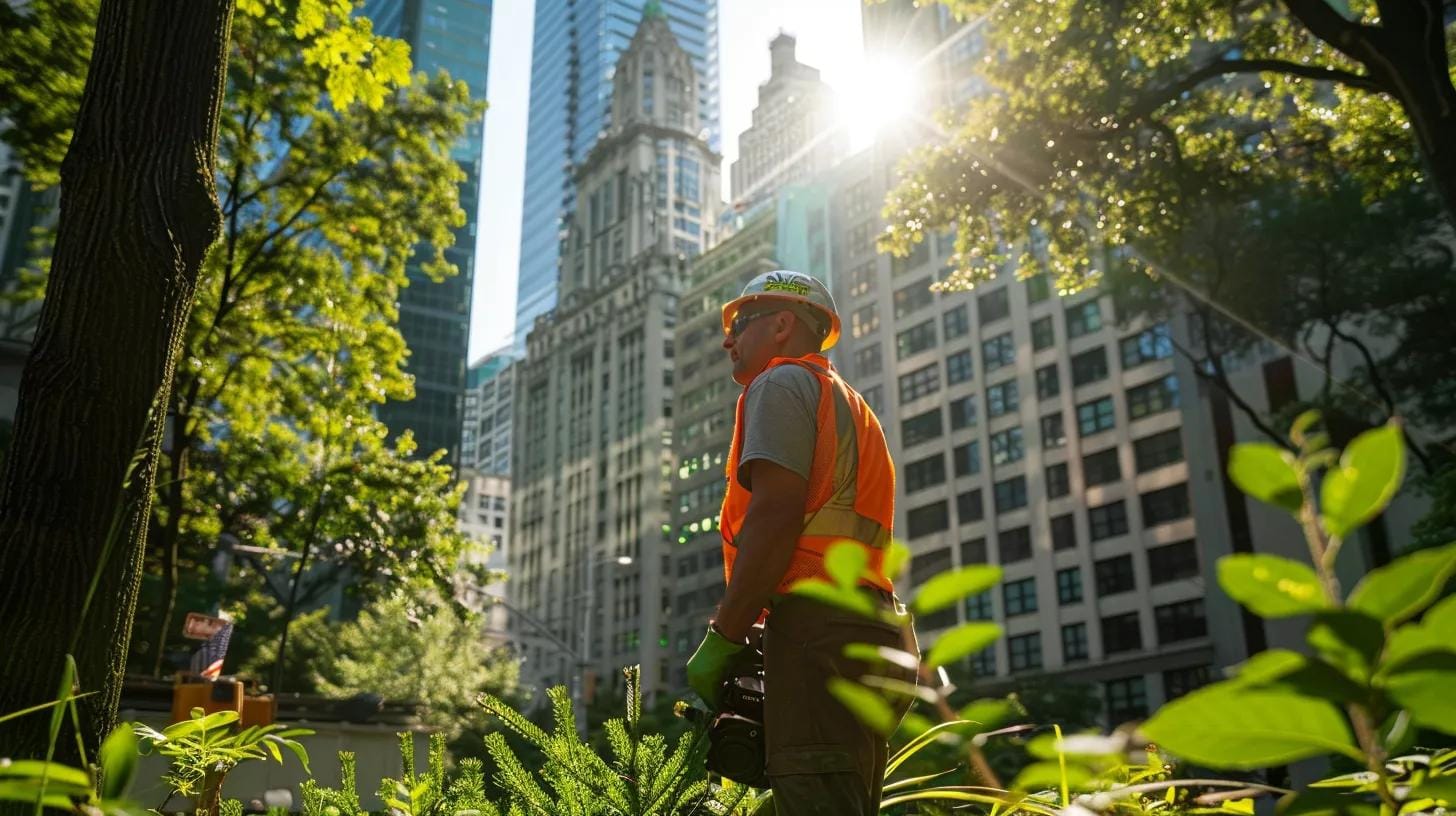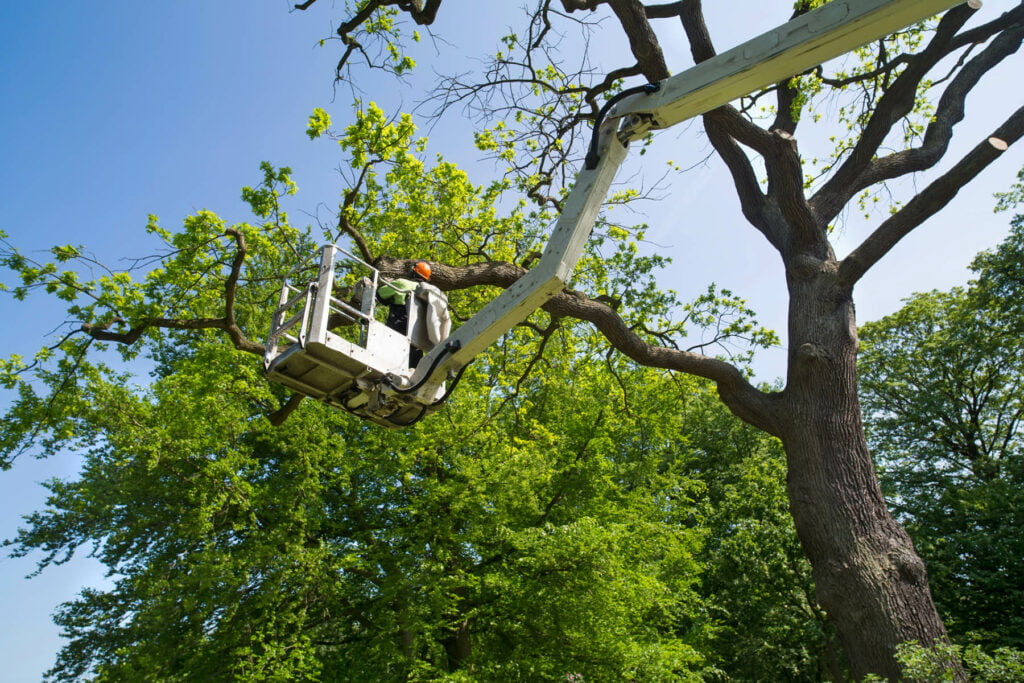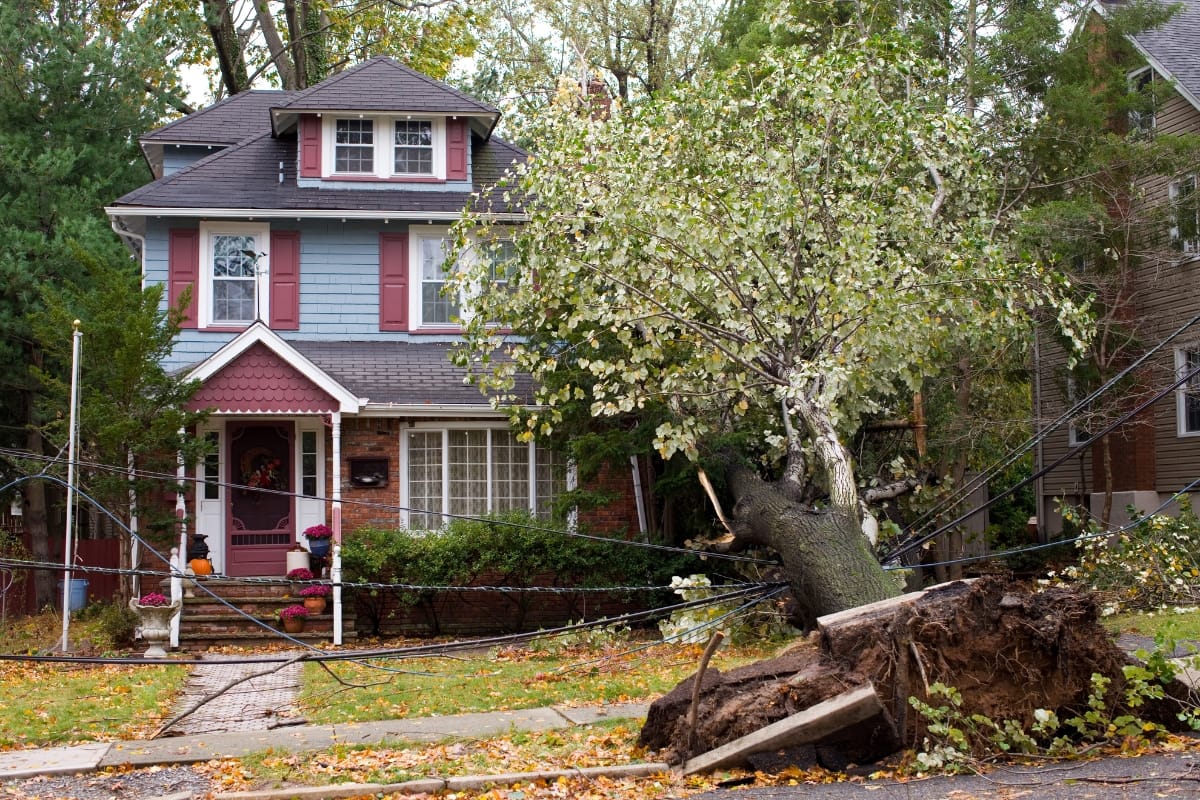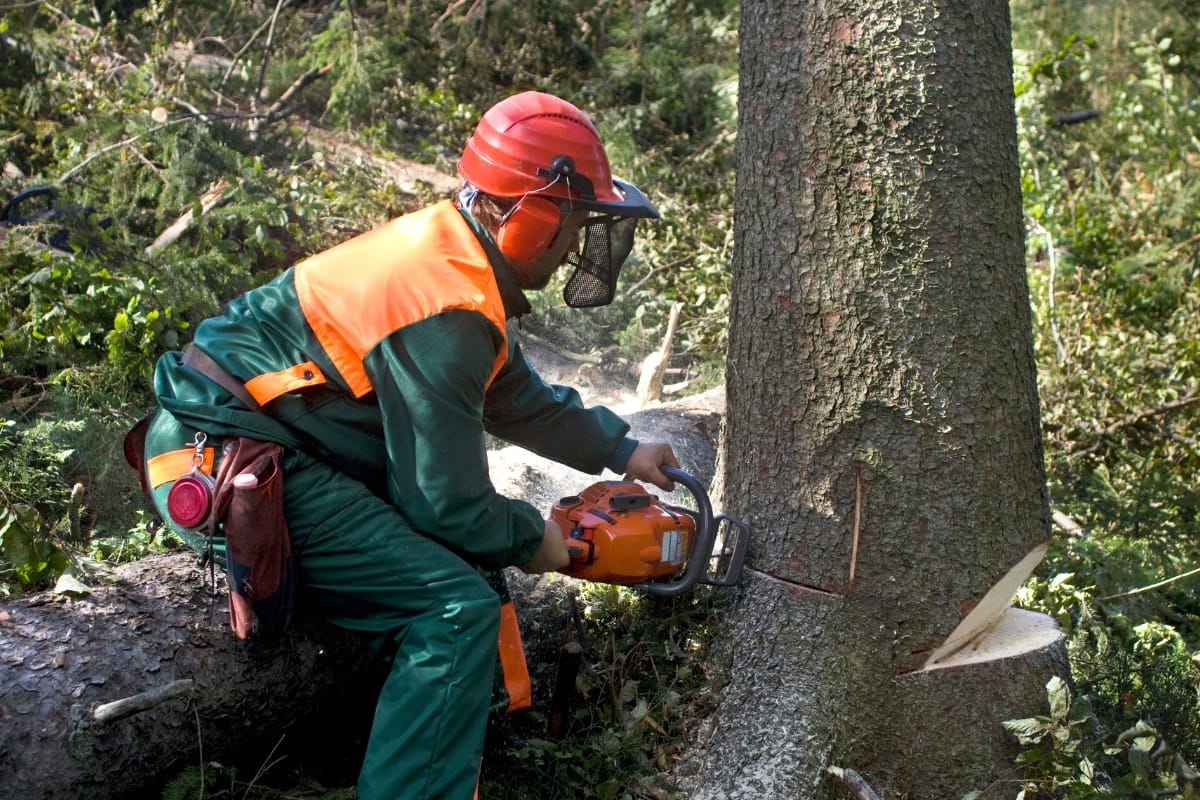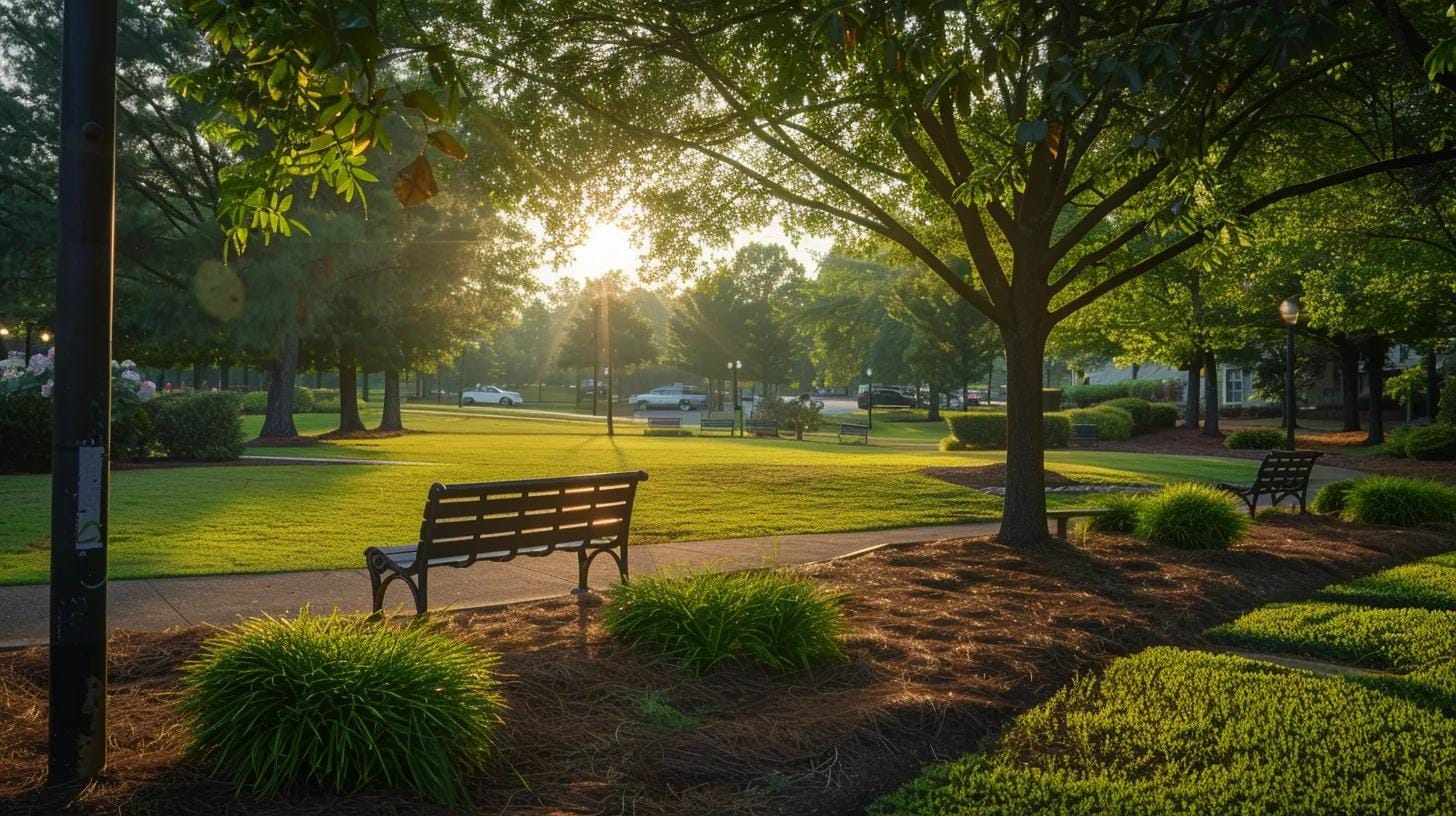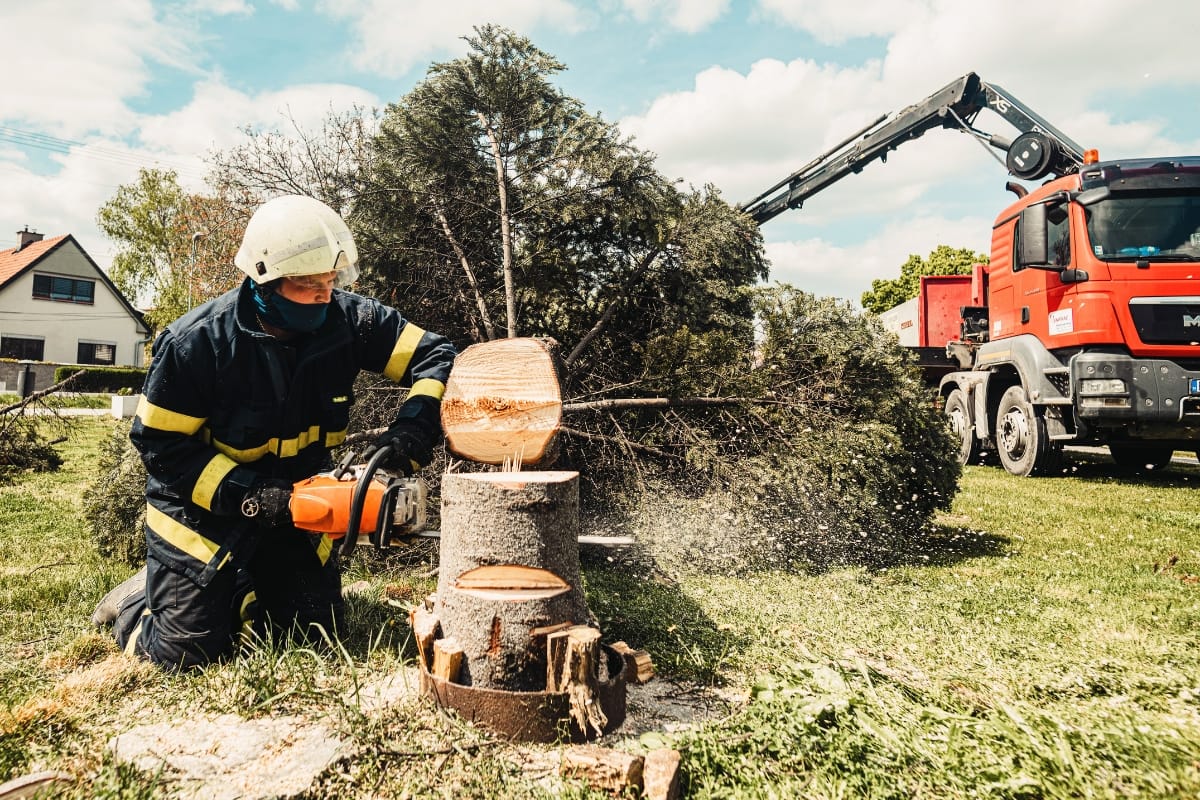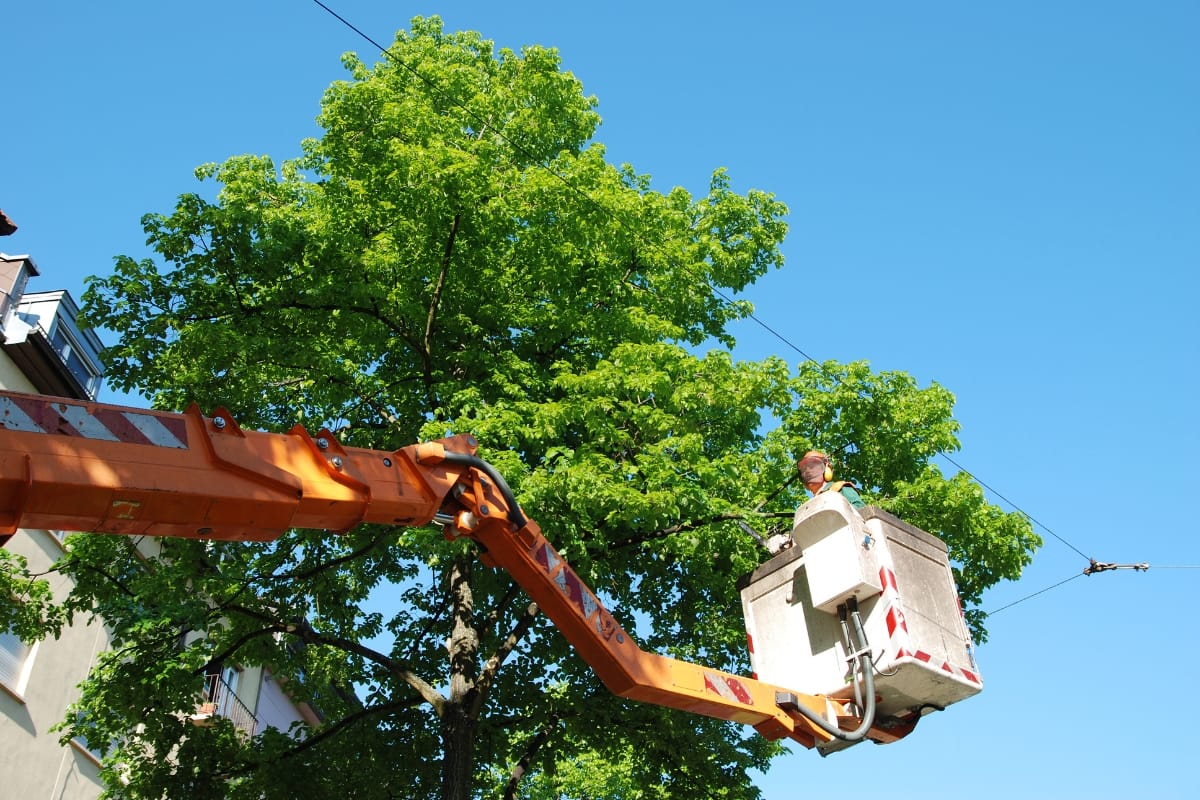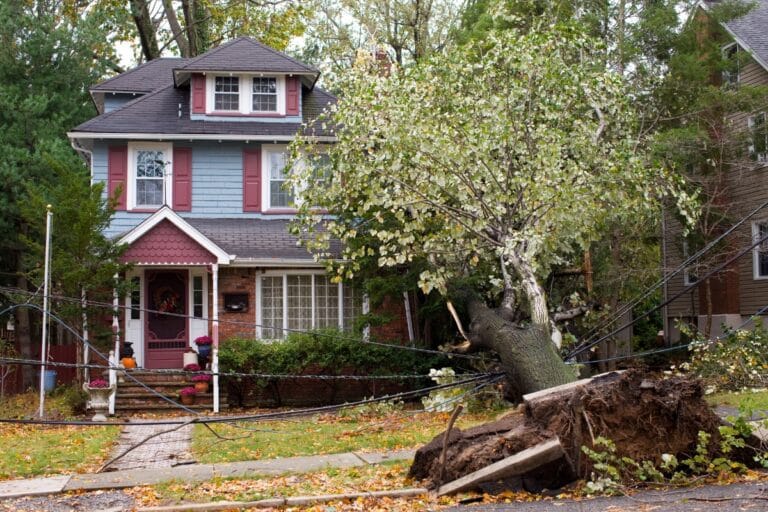Healthy, well-maintained trees enhance the beauty, value, and safety of your Marietta property—but keeping them in top condition requires more than just occasional pruning. Professional arborists bring specialized knowledge, experience, and equipment to ensure your trees thrive while avoiding hazards like disease, storm damage, or unstable limbs. Whether you need routine maintenance, emergency tree removal, or expert advice on tree health, hiring a certified arborist in Marietta guarantees quality care tailored to Georgia’s unique climate and tree species. In this guide, we’ll explore the key reasons why professional tree care is a smart investment for your home or business.
Why Hiring a Professional Arborist in Marietta Is a Must
What Does a Professional Arborist in Marietta Do?
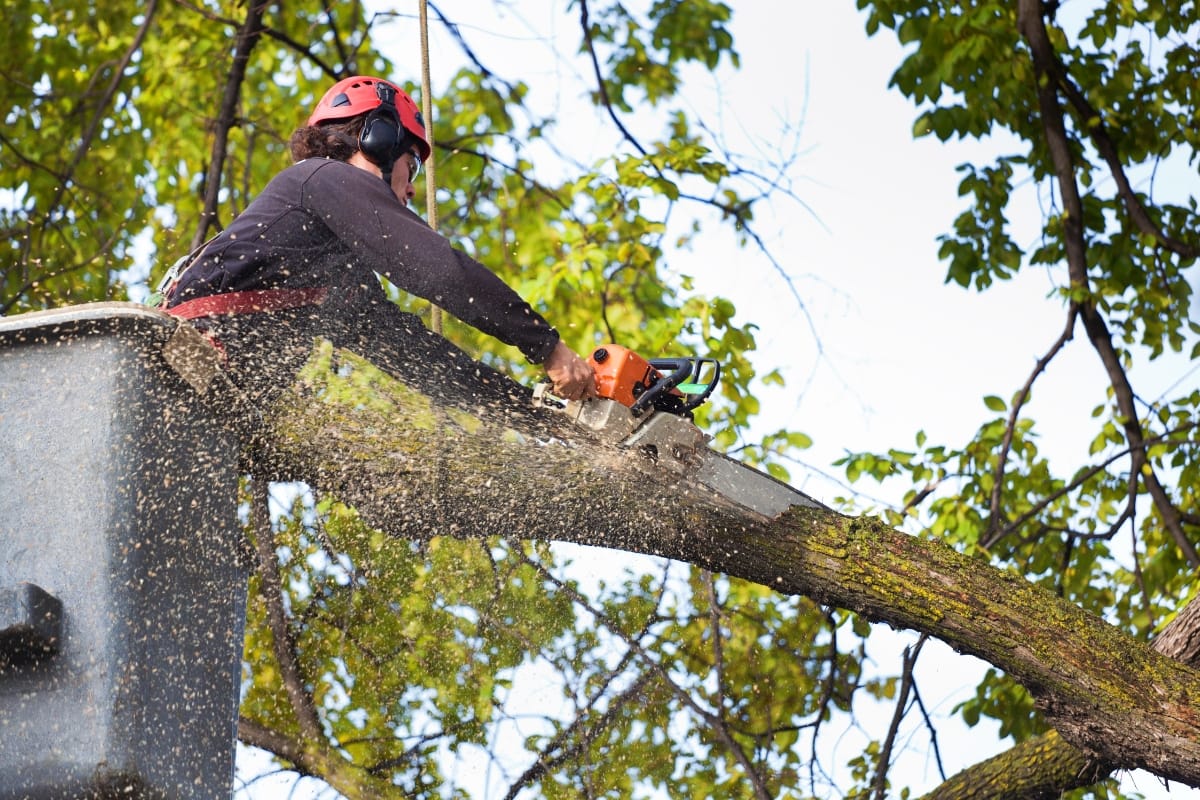
A professional arborist in Marietta specializes in the care and management of trees within urban and suburban landscapes. Their work begins with a thorough inspection of each tree’s overall condition, including the canopy, trunk, and root zone. Using methods endorsed by the International Society of Arboriculture, they look for signs of disease, pest infestations, structural defects, and environmental stress. Based on these observations, an arborist can recommend targeted actions—such as pruning to remove hazardous limbs, soil treatments to address nutrient deficiencies, or, in severe cases, safe tree removal. By tailoring their assessments to each tree’s health and the surrounding environment, arborists help protect property, enhance neighborhood safety, and promote the long‐term vitality of Marietta’s urban forest.
Key Services Offered by Expert Tree Care Professionals
Certified arborists provide a range of services designed to support tree health and landscape aesthetics. Precision pruning improves air circulation and sunlight penetration, reducing the risk of disease while encouraging strong branch structure. When soil tests reveal nutrient imbalances, they apply specialized fertilization programs that restore essential minerals without overloading the ground.
In cases of insect outbreaks or fungal growth, an arborist develops integrated pest management plans, combining targeted treatments with cultural practices—such as proper mulching and watering—to minimize chemical use and environmental impact. For trees showing signs of instability or splitting, cabling and bracing techniques reinforce weak limbs, helping them withstand high winds and heavy storms. Each procedure is applied only after careful evaluation, ensuring that interventions match the tree’s specific needs and the surrounding landscape design.
How Certified Arborists Maintain Tree Health and Safety
Maintaining a safe, healthy tree population requires both scientific knowledge and hands‐on skill. Arborists use professional tools—like resistographs, sonic tomographs, and visual risk assessment protocols—to gauge internal wood integrity and identify hidden decay. Their pruning cuts follow the International Pruning Standards, which emphasize clean cuts at the branch collar to facilitate rapid healing and prevent disease entry.
By adhering to these best practices, they preserve as much live tissue as possible while eliminating threats posed by deadwood or rubbing branches. Ongoing education keeps arborists current on emerging pests, treatment methods, and safety regulations. This commitment to continuous learning ensures that the advice and services they provide reflect the latest in arboricultural science, resulting in healthier trees and safer communities.
Why Local Expertise Matters for Marietta Trees
Regional knowledge is crucial when caring for Marietta’s trees. Local arborists understand the area’s clay‐rich soils, frequent summer storms, and frost patterns, all of which influence tree vigor and pest pressures. They recognize native and commonly planted species—such as oaks, maples, and dogwoods—and know which are most vulnerable to local diseases or environmental stressors. This insight allows them to recommend appropriate species for new plantings and to diagnose issues that may go unnoticed by non‐local practitioners.
Familiarity with city ordinances and permitting requirements streamlines projects, whether it’s pruning a street‐side oak or removing a hazardous walnut in a back yard. By combining technical expertise with an intimate understanding of Marietta’s climate and regulations, local arborists deliver efficient, cost‐effective services that keep the community’s trees safe, healthy, and vibrant.
How Can Tree Trimming and Pruning Improve Your Trees’ Health?
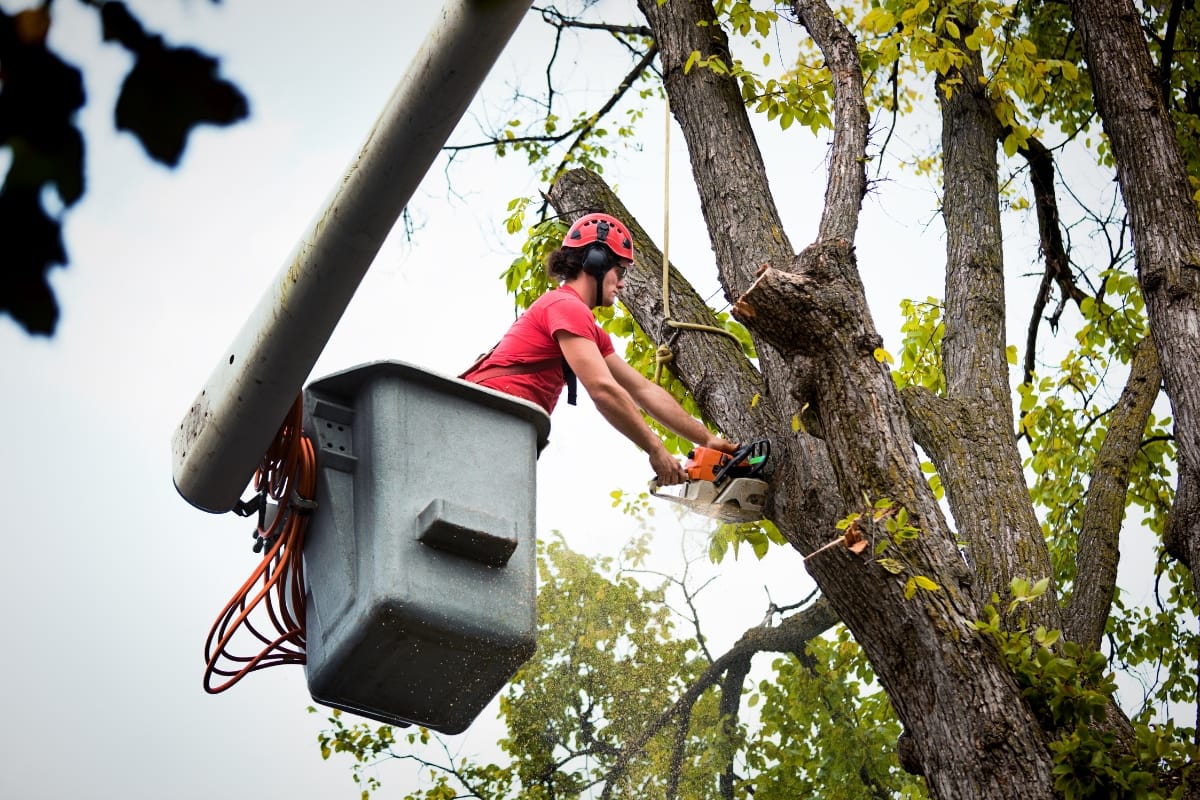
Proper pruning and trimming pave the way for stronger, longer-lived trees. By removing dead, damaged, or overcrowded branches, an arborist reduces the chance of breakage and limits the spread of disease. Cutting away unnecessary limbs allows the tree to focus nutrients and energy on healthy branches, resulting in a more robust structure. In turn, a well-shaped tree stands up to wind, rain, and heavy foliage loads more effectively, safeguarding both the tree and surrounding property.
The Benefits of Regular Tree Trimming
Routine trimming does more than enhance a landscape’s appearance. A balanced canopy lets sunlight filter through and air flow freely, conditions that discourage fungal growth and pest infestations. Fruit-bearing species often yield more when overgrown limbs are thinned, as the tree channels resources into quality rather than quantity. At the same time, removing weakened branches lowers the risk of falling limbs during storms, protecting people and structures below. Over time, these advantages translate into healthier, more attractive trees and a reduced need for expensive emergency removals or extensive repairs.
When to Schedule Pruning in Marietta
In the Marietta area, late winter to early spring generally offers the best window for major pruning. During dormancy, trees experience less stress, wound closure is more efficient, and insects are less active. That said, hazards can arise at any time—broken limbs after a heavy rain or diseased branches spotted mid-summer may demand immediate action. Local arborists rely on decades of regional experience to fine-tune timing recommendations for each species and to react swiftly when urgent cuts are necessary, ensuring year-round care that keeps trees safe and vigorous.
Species That Gain the Most From Professional Pruning
Some trees show more dramatic improvements after expert pruning. Oaks, for example, benefit from removing interior branches where oak wilt and other fungi thrive, reducing disease risk and encouraging healthy growth patterns. Pines respond well to selective thinning, which opens the canopy and decreases wind resistance.
Flowering ornamentals—such as dogwoods, redbuds, and cherry trees—produce more blossoms when old or crossing limbs are cut away, resulting in brighter spring displays. Fruit trees also depend on precise pruning to maintain structure and improve harvest size and quality. Each species has its own ideal pruning approach, and a professional arborist applies those protocols to maximize health, safety, and visual appeal.
When and Why to Consider Professional Tree Removal
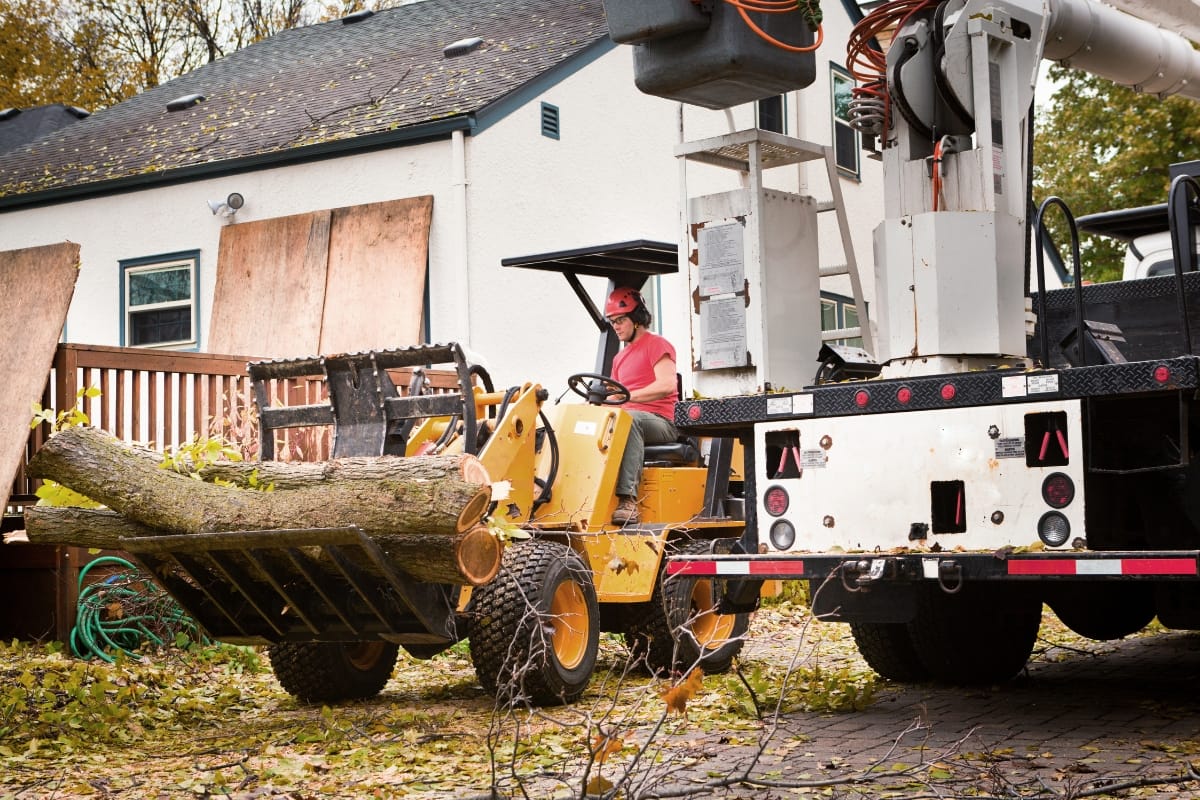
Edit this content so it doesn’t sound AI generated, and isn’t so full of flowery words. DO NOT USE em-dashes/— in the final generation. Add content if needed but make sure that the original intent of the content is preserved, remove all references to a contact us call to action because it’s too spammy. Don’t use bulleted lists within the subheading content. Remove the spammy references to services and the like. Make sure the final generation totals about 500 words of usable content.
Safe Tree Removal Practices by Certified Arborists
Professional arborists follow a step-by-step process to take down a tree without endangering nearby structures, landscaping, or passersby. Starting with a detailed risk assessment, they examine the tree’s lean, crown weight, and any nearby obstacles. Using rigging lines and harnesses, they then cut the tree into manageable sections, lowering each piece carefully to the ground. In tight spaces or for large specimens, cranes or bucket trucks may be used to support heavy limbs. Once the main trunk is out of the way, the team removes remaining stumps or grinds them below grade. Throughout the operation, debris is sorted and recycled or properly disposed of, leaving the site clean and safe.
Common Reasons for Tree Removal in Marietta
Homeowners in Marietta often face several tree-related challenges that call for removal. Pervasive diseases such as oak wilt or fungal rot can weaken large branches, creating a safety issue. After severe weather, cracked trunks or split limbs can render a tree unstable. Trees that encroach on homes, driveways, or utility lines present ongoing maintenance headaches and potential damage. Root systems that buckle sidewalks or invade sewer lines require swift action to prevent costly repairs. In each case, an arborist’s expert evaluation pinpoints whether pruning or other treatments might suffice, or if removal is the most effective solution.
Tree Removal Cost Factors in Marietta
Several elements influence the price of taking down a tree. Size and species are the primary determinants; taller trees with wide canopies and hard, dense wood require more time and effort to dismantle safely. Accessibility also plays a role—trees in confined spaces or next to structures demand specialized equipment, driving up labor costs.
The complexity of disposal, including stump grinding and hauling away large volumes of wood and brush, further affects the total. In Marietta, removal fees typically range from $300 for a small ornamental tree to $1,500 or more for mature specimens in challenging locations. Most quotes break out the cost of cleanup and stump removal, giving homeowners a clear view of the investment needed to regain a safe, uncluttered landscape.
What Are Stump Grinding Services and Why Are They Necessary?
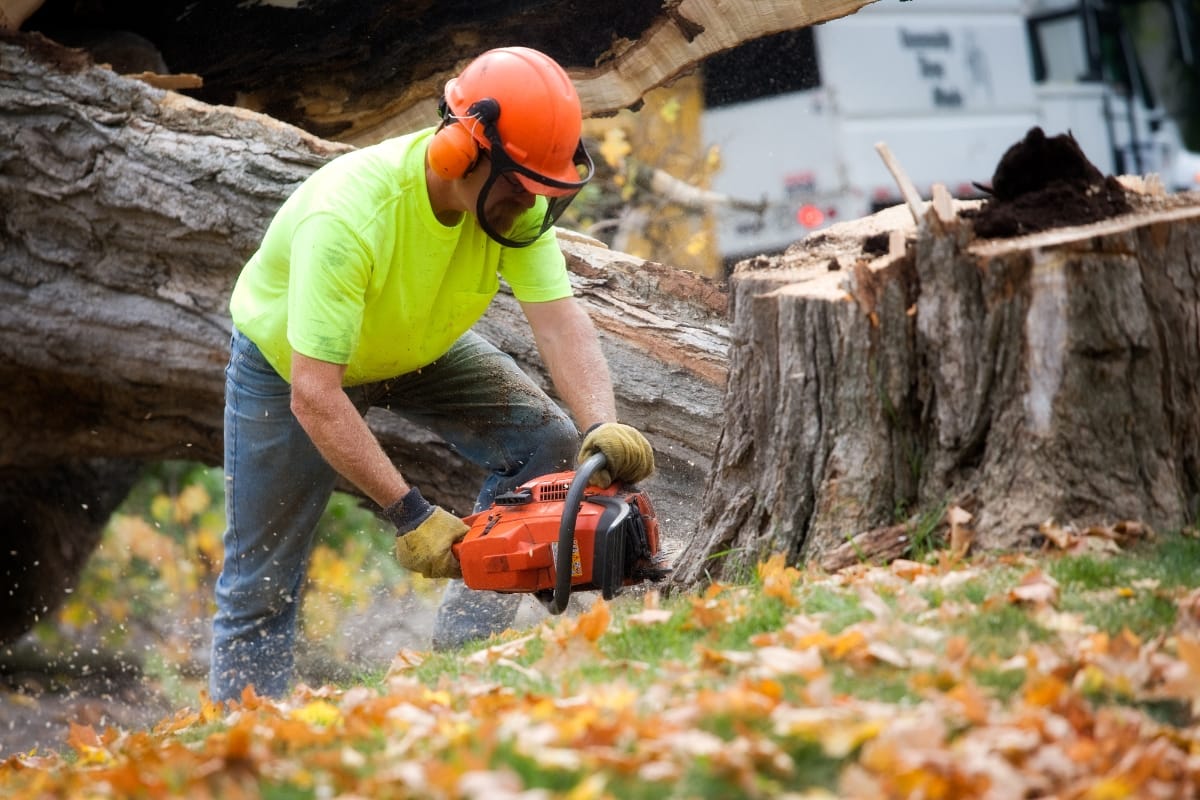
Once a tree is cut down, its remaining stump can become an eyesore and a safety concern. Stump grinding provides a solution by breaking the stump into fine wood chips that integrate back into the soil as mulch. This process eliminates tripping hazards, discourages pests like termites and carpenter ants, and opens up the area for new plantings or lawn restoration. Retaining a clean, level ground also reduces the need for constant mowing and makes landscaping projects simpler.
Stump Grinding vs. Full Stump Removal
Stump grinding focuses on shaving the stump down to several inches below the soil surface. A specialized machine, equipped with a rotating cutting wheel, grinds the wood into chips that can be spread over flower beds or pathways. Full stump removal goes further, excavating the root system entirely, which leaves no trace of the tree’s original footprint. While removal provides extra clearance for heavy construction or deep planting, it requires more time, labor, and often larger equipment. Grinding, by comparison, is faster, less intrusive, and minimizes disruption to surrounding grass and garden beds.
The Advantages of Clearing Stumps from Your Yard
Eliminating stumps offers both aesthetic and practical benefits. A yard without leftover tree bases looks neat and uniform, boosting curb appeal and property value. Safety improves as hidden roots no longer present tripping points for children or guests. Decaying stumps can foster fungal growth, which may spread to nearby healthy trees; removing them stops these disease vectors. Finally, clearing stumps frees up space for garden expansions, patio installations, or playground equipment, making the yard more versatile and functional.
How Certified Arborists Grind Stumps Safely
Professional arborists start by inspecting the stump’s diameter, height above ground, and proximity to structures or plantings. They mark underground utilities and ensure the area is clear of debris. The grinder’s cutting wheel is then set to the proper depth—typically four to six inches below grade—to allow for topsoil replacement. As the machine advances, it chips wood into uniform mulch, which can be raked into flower beds or used as ground cover. Technicians periodically check the machine’s stability and adjust its position to avoid damage to nearby turf or roots of favored trees. After grinding, the site is leveled, and the arborist may refill the hole with soil or compost, leaving a smooth surface ready for reseeding or new landscaping.
Timing and Frequency of Stump Grinding
Ideally, stumps are ground out soon after removal to prevent regrowth or pest colonization. Fresh stumps grind more easily because the wood retains moisture; older, dry stumps may take longer and require deeper grinding to fully remove roots. Homeowners with multiple stumps or extensive root networks might schedule grinding in stages, focusing first on the largest hazards. Scheduling on a dry day prevents soil compaction and ensures that mulch blends naturally into existing beds.
Planning for a Mulch-Rich Landscape
The wood chips produced by stump grinding are a valuable resource. Spread around trees and shrubs, they suppress weeds, retain moisture, and gradually decompose to enrich soil. When used on pathways, they create a soft, rustic surface that reduces erosion. By planning to reuse the mulch on site, homeowners minimize waste and cut the cost of purchasing commercial mulch. Properly aged chips—left to dry and break down over several weeks—offer the best texture for garden applications.
How Emergency Tree Services Protect Your Property in Marietta
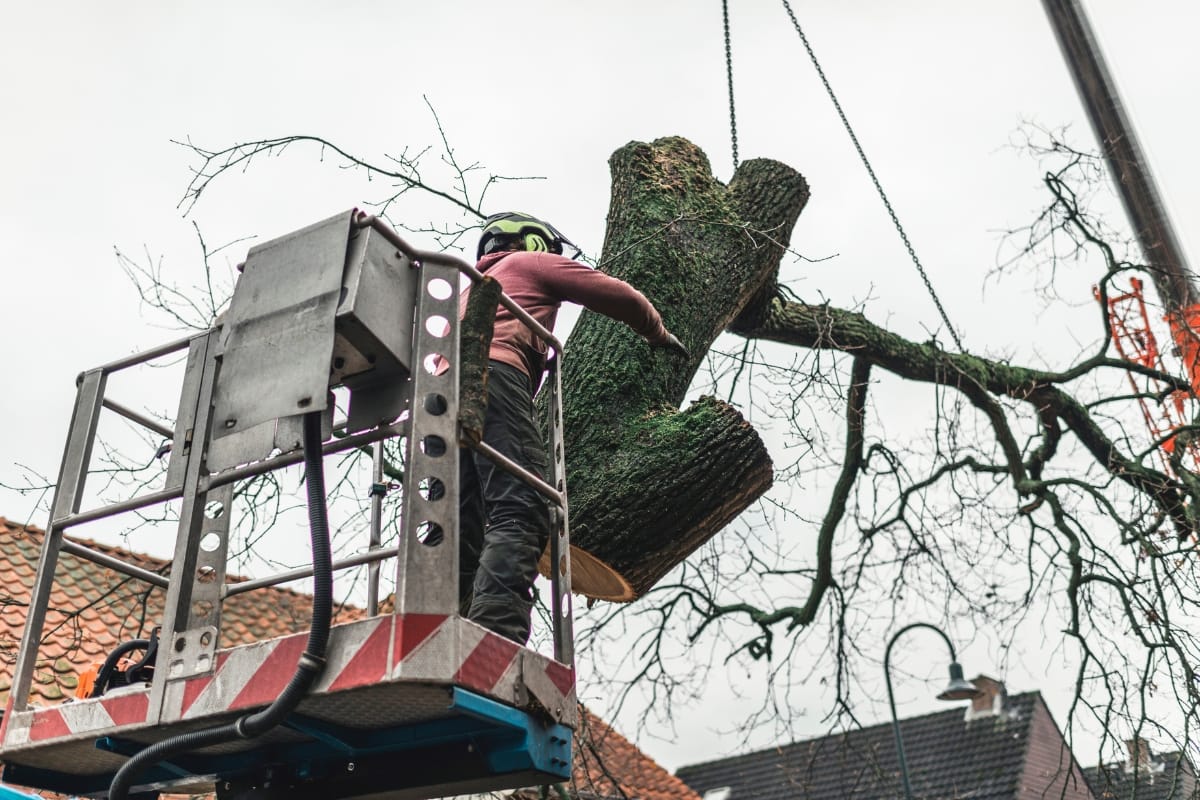
In Marietta’s unpredictable weather, sudden storms or high winds can leave trees weakened or partially collapsed, creating immediate dangers for homes, vehicles, and utility lines. Emergency tree services step in to assess hazards and take swift action to safeguard property and occupants. By quickly removing broken limbs or unstable trunks, these crews reduce the risk of structural damage, falling debris, and electrical outages. Their rapid response not only restores safety but also prevents secondary problems—such as a compromised roof leading to interior water damage—by addressing vulnerable trees before conditions worsen.
When to Call for Emergency Tree Care
Knowing when to reach out can make all the difference. If branches snap or split during a storm and hang directly over a driveway, porch, or power line, that situation calls for immediate intervention. When a tree suddenly tilts toward a building or begins to uproot its base, leaving roots exposed and soil heaved, delaying action risks collapse under the next gust of wind.
Likewise, large dead limbs cracking loose above high-traffic areas can fall without warning, posing serious injury risks. In these scenarios, certified arborists arrive with the training and equipment needed to secure or remove the threat, sparing homeowners from handling dangerous cuts or costly emergency repairs later.
What a 24/7 Emergency Tree Service Offers
Around-the-clock emergency crews are equipped to respond at any hour, often arriving within a few hours of a call. Upon arrival, arborists perform a concise but thorough inspection, deciding whether pruning, cabling, or full removal is required. If a tree can be saved, they may install temporary supports—such as cables or braces—that hold weakened limbs in place until a more permanent solution can be scheduled.
When removal is unavoidable, the team uses rigging techniques and safety gear to dismantle the tree in sections, carefully lowering each piece away from structures and landscaping. After the main work is complete, they clear branches, wood chips, and foliage, leaving the site clean and safe. This end-to-end service ensures that hazards are managed immediately, and properties are restored to a secure state before the next weather event.
How Certified Arborists Handle Storm-Damaged Trees
Storm damage often reveals hidden defects: trunk cracks, split bark, or root fractures that compromise a tree’s stability. Certified arborists use specialized tools—such as resistographs and sounding mallets—to detect internal decay and assess structural integrity. When a damaged tree shows enough healthy wood and stable roots, selective trimming removes compromised limbs, and strategic pruning reshapes the crown to reduce wind resistance.
In more severe cases, they may reinforce the tree with steel cables or wood laminates that redistribute mechanical stress. If the tree is beyond saving, arborists plan a controlled removal that protects surrounding plants and structures. Their methodical approach minimizes collateral damage and sets the stage for future plantings or landscape redesigns, ensuring that each new tree has the space and conditions needed to thrive without repeating past hazards.
Preventive Health Assessments for Trees
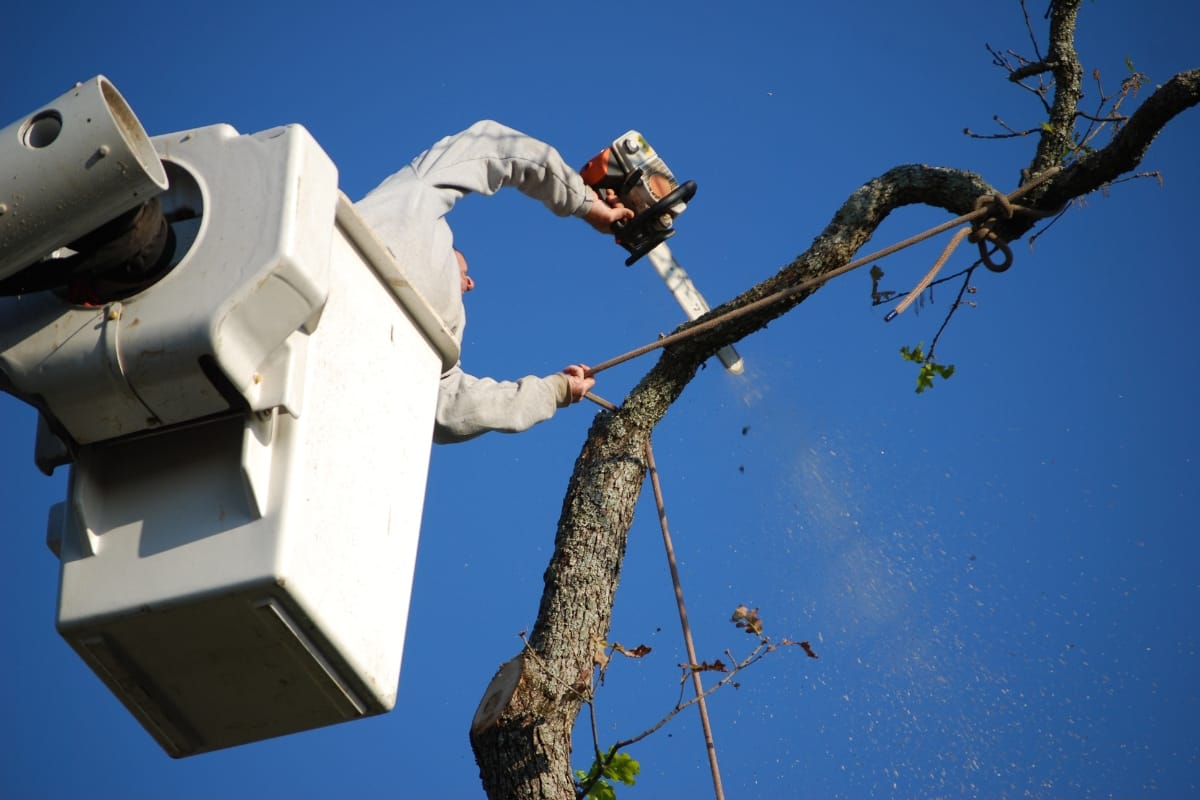
Routine health evaluations allow arborists to spot emerging problems before they take hold. During these inspections, professionals examine leaves, branches, and bark for signs of stress—such as early wilting, unusual growths, or sap exudation—that often presage disease or pest invasion. Soil tests may accompany visual checks to assess nutrient levels and pH balance, providing insight into the root environment.
By identifying issues in their infancy, arborists can recommend targeted remedies—ranging from soil amendments to strategic pruning—that nip problems in the bud. This proactive stance keeps trees vigorous, reduces the need for drastic interventions later, and helps maintain a balanced landscape where each specimen supports the health of its neighbors.
Recognizing Disease Symptoms in Marietta’s Trees
Several illnesses commonly affect local species, and early intervention hinges on recognizing their telltale signs. Watch for leaves that yellow or brown out of season, as premature drop often signals root or vascular stress. Cankers—sunken, discolored areas on trunks or limbs—indicate fungal invasion that can girdle branches if left unchecked. Mushrooms or bracket fungi sprouting at a tree’s base typically point to internal wood decay.
When these symptoms appear, prompt action is critical: removing infected limbs, improving air circulation through selective thinning, and applying appropriate treatments can halt disease progression. Ignoring these red flags risks not only the health of an individual tree but the spread of pathogens throughout the landscape.
Diagnosing and Treating Pest Infestations
Damage from insects often shows up as holes in leaves, ragged edges, or fine sawdust-like frass around bark crevices. Arborists collect samples of affected tissue or the insects themselves to accurately identify the culprit—whether scale insects, borers, or caterpillars. Once identified, experts craft an integrated pest management strategy tailored to each situation.
Biological controls, such as introducing predatory insects or applying beneficial nematodes, provide long-term suppression without harmful chemicals. When infestations threaten significant harm, targeted insecticides or horticultural oils may be used sparingly and applied directly to affected areas. This precise approach controls pests effectively while minimizing collateral impact on beneficial wildlife and the surrounding environment.
The Value of Ongoing Monitoring
A one-off inspection is rarely enough to guarantee long-term tree health. Seasonal changes, evolving climate conditions, and shifting pest populations mean that a healthy tree today might need care tomorrow. Scheduling assessments twice a year—ideally in early spring before leaf-out and in late summer at the end of peak growth—allows arborists to track each tree’s response to previous treatments and adjust care plans as needed. Regular monitoring also keeps property owners informed about potential hazards, such as structural weaknesses or emerging disease hotspots, so they can budget for interventions before an emergency arises. By treating tree health as a continual process rather than a single event, homeowners safeguard their landscape investment and enjoy a greener, more resilient outdoor space.
Why Hire a Certified Arborist in Marietta for Tree Care
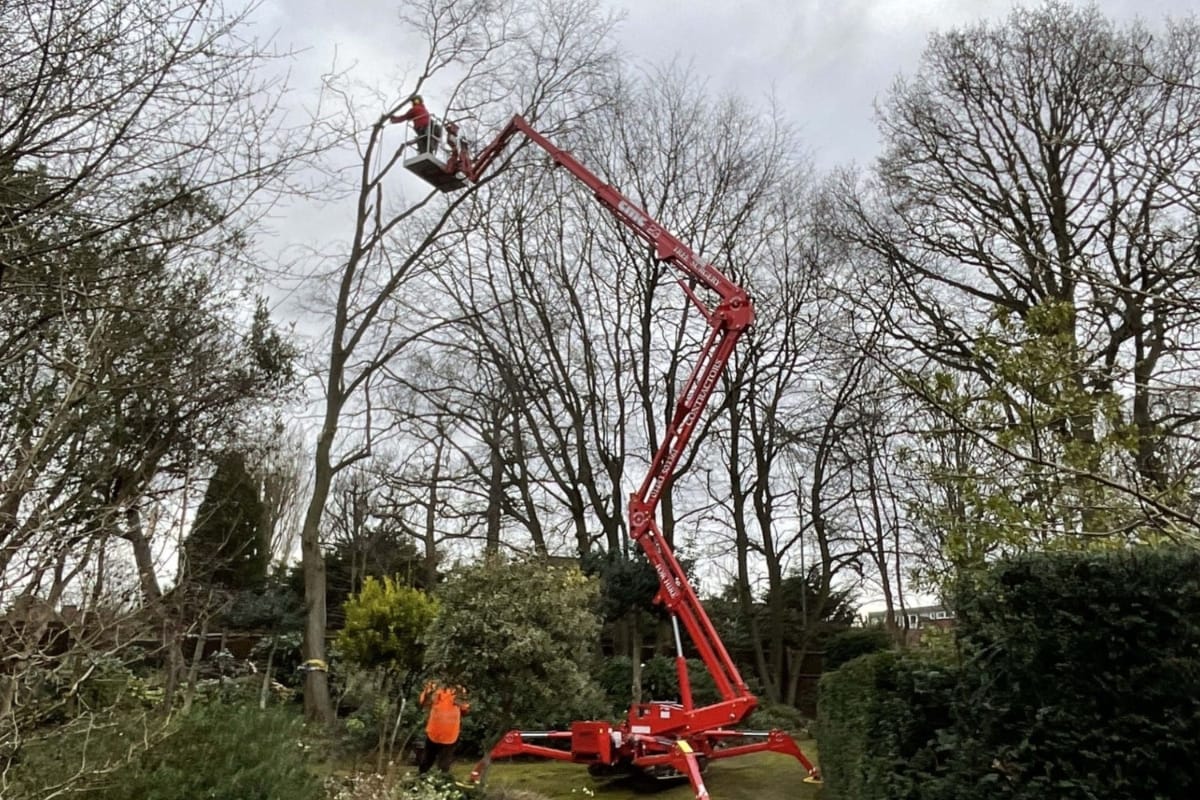
When it comes to maintaining the health and safety of your trees, working with a certified arborist ensures that every decision is backed by industry-recognized expertise. Certification through the International Society of Arboriculture (ISA) requires arborists to demonstrate a deep understanding of tree biology, structural integrity, and proper care techniques. In Marietta, where local soil, weather, and pest pressures present unique challenges, choosing a certified professional gives you confidence that interventions—whether routine pruning or emergency removals—will be executed safely and effectively.
Credentials That Matter
A certified arborist has completed formal coursework and passed comprehensive exams covering topics such as nutrient cycles, disease identification, and risk assessment. These professionals must also accumulate hands-on experience under the supervision of senior mentors and renew their credentials regularly to stay current with advances in arboriculture. This commitment to continuous learning translates into careful, up-to-date practices that protect both individual trees and the broader ecosystem. When you hire someone with ISA certification, you know they understand when to prune to encourage healthy growth, how to identify early signs of decay, and which interventions carry minimal impact on the surrounding landscape.
Elevating Quality and Safety
Certification drives a higher standard of care. Certified arborists follow established guidelines for pruning cuts that preserve tree strength and minimize disease entry. They use specialized tools—such as sonic tomographs and resistographs—to assess internal wood integrity, making it possible to detect hidden decay before it becomes dangerous. Even complex tasks like cabling large oaks or bracing split trunks are handled with precision, using industry-approved hardware and methods that maintain a tree’s structural integrity. Because certified arborists carry professional liability and carry required insurance coverage, you also gain protection against accidental damage to your property or injury during work, a reassurance that DIY attempts or inexperienced contractors cannot match.
Local Expertise and Community Trust
Marietta’s native and commonly planted species—from red oaks to dogwoods—react differently to pruning, fertilization, and pest treatments than trees in other regions. Certified arborists who live and work here develop a practical understanding of local weather patterns, soil types, and insect pressures. This on-the-ground experience enables them to offer tailored recommendations, such as the best time to trim to avoid winter dieback or which treatments will control invasive borers without harming beneficial insects. Their connections with neighborhood associations and municipal authorities streamline permit processes for larger projects and ensure compliance with local codes.
What Are the Most Common Tree Species in Marietta and Their Care Requirements?
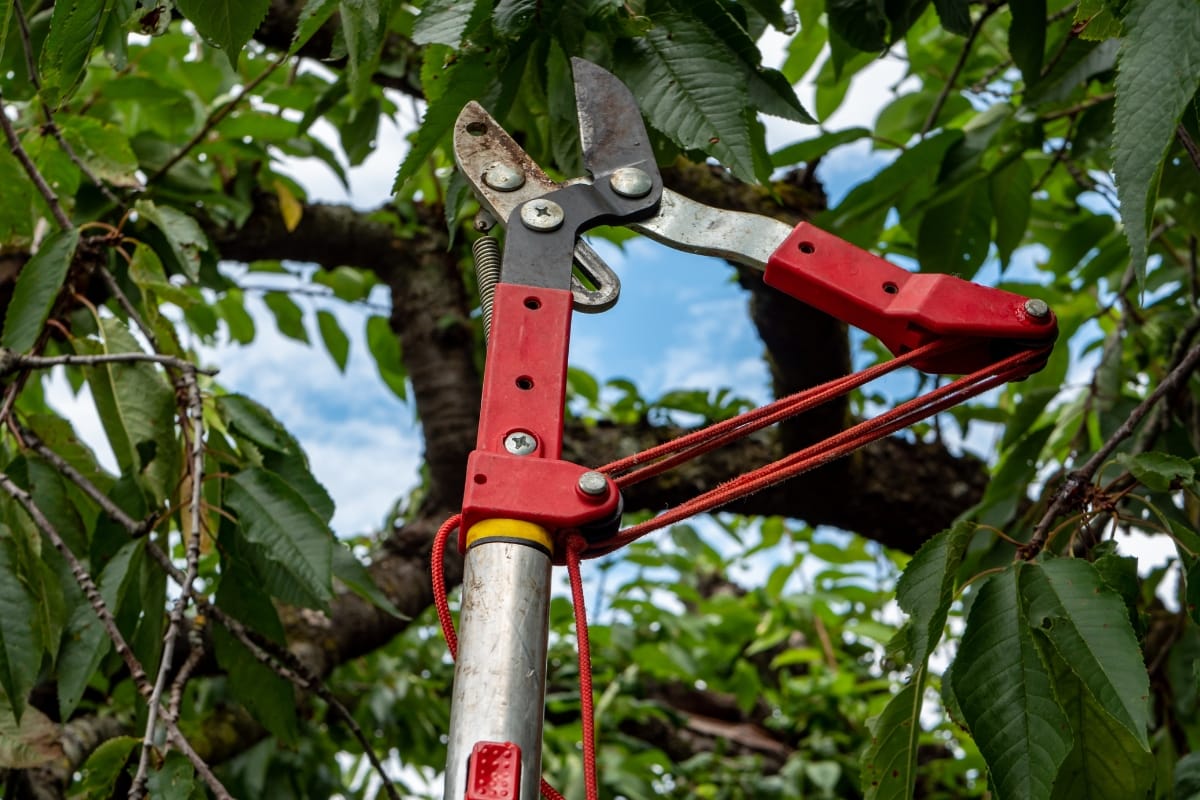
In Marietta’s neighborhoods, you’ll frequently find oaks, pines, maples, magnolias, and other ornamentals that define the local streetscape. Each species thrives under different conditions and faces its own challenges. Professional arborists begin by evaluating soil composition, drainage, sun exposure, and microclimates to create care plans tailored to each tree. By matching pruning schedules, irrigation levels, and pest control measures to the needs of individual species, these plans ensure trees develop strong root systems, healthy canopies, and the structural integrity required to withstand storms and seasonal changes.
Oaks and Pines: Maintenance for Strength and Longevity
Southern live oaks are a hallmark of Marietta’s canopy. They benefit from annual pruning to remove dead or crossing branches, which improves air circulation and reduces the likelihood of oak wilt and other fungal diseases. Trimming also helps maintain a balanced crown, lowering the risk of branch failure under heavy rain or wind. Pines, including loblolly and Virginia pines, require occasional thinning to reduce resin build-up and prevent overcrowding within the crown.
Removing select interior limbs allows sunlight to reach inner needles, slowing needle drop and promoting even growth. Both oaks and pines respond well to deep, infrequent watering that encourages roots to grow deeply, increasing drought resilience. Mulching around the drip line suppresses weeds, moderates soil temperature, and retains moisture, further supporting tree health.
Top Choices for Marietta Landscapes
When selecting new plantings, homeowners often turn to species known for their beauty, toughness, and low upkeep. Eastern redbuds produce bright pink blossoms in early spring and tolerate a range of soil types. Crepe myrtles add summer color with long-lasting blooms, and their smooth bark brings winter interest. Southern magnolias, with their glossy leaves and fragrant white flowers, provide year-round appeal.
Native maples—such as the silver or red maple—offer dramatic fall foliage, though red maples may need careful siting to avoid root interference with sidewalks. By choosing species adapted to local conditions, residents enjoy reliable performance and reduced maintenance over the decades.
Adapting Care to Marietta’s Climate
Marietta’s humid summers and occasional droughts demand a flexible approach to watering and mulching. Arborists recommend applying water deeply every two to three weeks during dry spells, rather than light daily sprinkling, to encourage deeper root growth. Prior to winter, structural pruning removes weak limbs that might break under ice or heavy rain. After storms, quick inspections identify any cracked trunks or split limbs so that corrective pruning or cabling can restore stability.
Seasonal soil tests guide fertilization, ensuring trees receive the correct balance of nutrients without promoting excessive, vulnerable new growth. By following a care schedule that reflects spring leaf-out, summer heat, autumn leaf drop, and winter dormancy, professionals help Marietta’s trees withstand the full cycle of local weather.
How Can You Prepare for Tree Care Services and What to Expect?
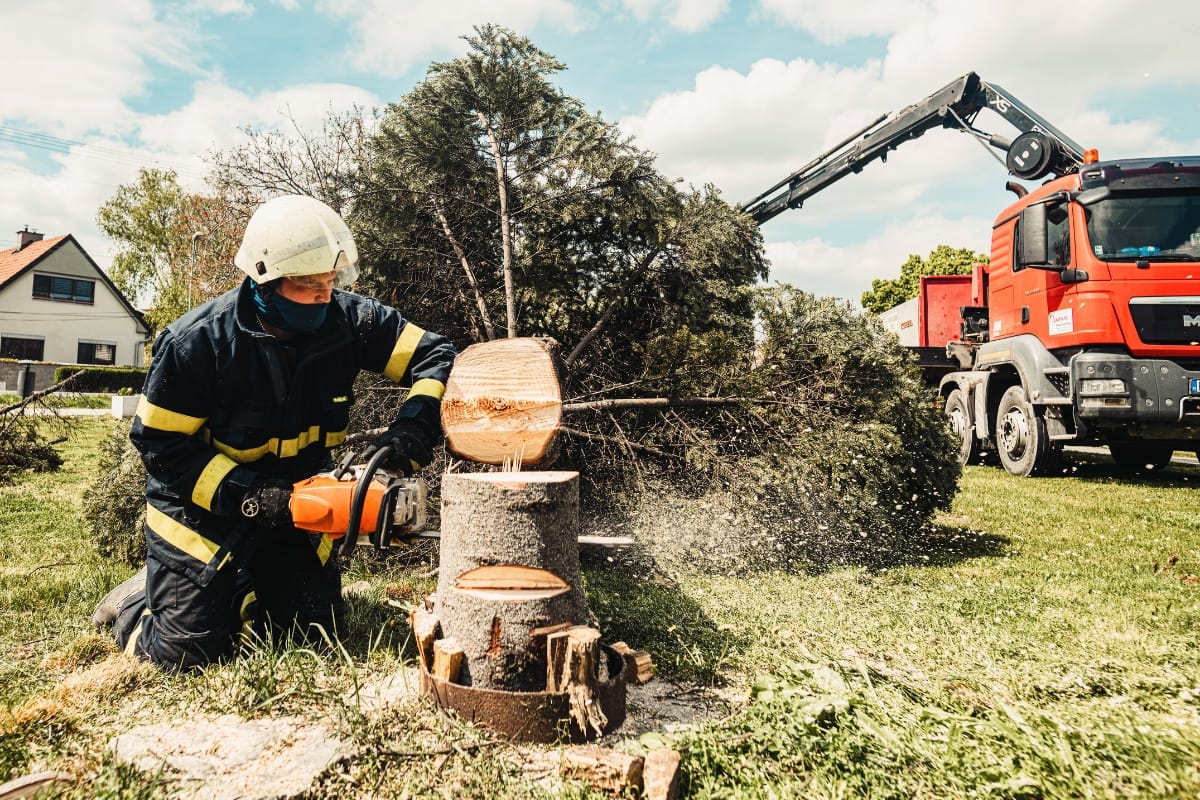
Having trees serviced begins with understanding the scope of work and what to expect from an arborist. Before any work starts, a certified professional will visit your property to evaluate each tree’s condition—looking at its species, size, age, and overall health. They’ll note any structural weaknesses, pest or disease problems, and site constraints such as nearby structures or utility lines.
Based on that assessment, the arborist outlines a plan that may include pruning, cabling, disease treatment, or removal. Knowing this process in advance helps homeowners anticipate the timeline, equipment needs, and any ground preparation—such as clearing debris or providing safe access routes—that will allow the crew to work efficiently.
Key Questions for Your Arborist
Start by confirming the arborist’s credentials and insurance. Ask which certifications they hold—such as ISA credentialing—and whether their company carries liability and workers’ compensation coverage. This protects you from potential damages or injuries during the work.
Request references or examples of recent projects that resemble your own, so you can judge the quality of their workmanship. Inquire about their specific approach to your trees’ needs: how they determine where to prune, which treatment methods they use for pests or diseases, and what safety measures they employ when working near power lines or structures. A transparent, detailed conversation ensures you and the arborist share clear expectations.
Securing a Detailed Estimate
Most reputable tree care companies offer a no-charge consultation. During the on-site visit, the arborist measures trunk diameters, inspects canopy density, and evaluates the surrounding landscape for any obstacles. They then provide a written estimate that breaks down the cost of labor, equipment, and disposal of cut material.
Estimates typically include the number of workers assigned, the type of machinery used—such as bucket trucks or stump grinders—and the projected duration of the job. Homeowners should review this document closely, ensuring it covers every recommended task and clarifies whether additional fees might apply for emergency work or unexpected complications.
What to Expect on Service Day
On the scheduled day, the crew arrives with trucks, wood chippers, and safety gear. Before beginning, they perform a quick site walkthrough with you to confirm the work areas and discuss any last-minute concerns—such as protecting delicate plantings or avoiding certain hours for noise reduction.
As the arborists prune, remove limbs, or treat disease, they’ll work efficiently while keeping debris contained. Once the main tasks are complete, they clean up wood chips and branches, often recycling the chips on-site as mulch. A final inspection confirms that the trees have been serviced to specification and that the property is left tidy.
Frequently Asked Questions
Q: What qualifies someone to be a certified arborist in Marietta? A: A certified arborist typically obtains credentials from the International Society of Arboriculture, which involves formal training in tree biology, hazard assessment, safe pruning practices, and continuing education.
Q: How often should we schedule tree health assessments for our property? A: It is generally recommended to have an annual tree health assessment to detect early signs of pest infestations, diseases, or structural issues, allowing for timely interventions.
Q: Can pruning and trimming improve tree growth? A: Yes, proper pruning and trimming boost aesthetic appeal, stimulate new growth, improve air circulation, and prevent the spread of disease, resulting in more vigorous and balanced tree growth over time.
Q: What steps should be taken if a tree becomes hazardous during a storm? A: In storm emergencies, contact a 24/7 emergency tree service immediately. Certified arborists will assess the damage, remove loose or hazardous branches, and, if necessary, perform complete removal to protect your property.
Q: How does local expertise impact tree care in Marietta? A: Local arborists understand the specific climate, common pests, and native species in Marietta, which enables them to provide customized care solutions that are both effective and sustainable.
Q: How much should I expect to pay for routine tree trimming services? A: Routine tree trimming typically ranges from $300 to $1,200 per tree, with final estimates provided after an onsite evaluation by a certified arborist.
Q: Are emergency tree services covered by insurance? A: Many tree care companies carry insurance covering property damage and worker safety, though specifics depend on the policy. It is best to discuss these details with your arborist.
Final Thoughts
When it comes to preserving the beauty, safety, and value of your property in Marietta, expert arboriculture isn’t just a luxury—it’s a necessity. Campbell Tree Management Services combines years of professional experience with a deep respect for Georgia’s unique tree species, ensuring healthy growth and storm-ready resilience for every tree on your land. Don’t leave your trees’ well-being to chance—reach out to the specialists who understand them best. Call Campbell Tree Management Services today at (770) 286-8058 or visit our website to request a free quote and give your landscape the expert tree care it deserves.
